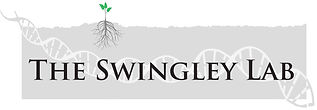
PRAIRIE RESTORATION
The soil microbiome and agricultural recovery
Project Description
Ecosystem restoration has become an important strategy in mitigating and reversing biodiversity loss, with the goal of establishing diverse communities that carry out and contribute to desirable ecosystem functions. Traditional restoration efforts have focused on the introduction, maintenance, and monitoring of native macroorganisms, particularly plants, although investigations of belowground organisms have revealed that soil microbial communities can play important roles in the pace and trajectory of recovery in ecosystem restoration. Work in my lab has focused on characterizing the impact of restoration on soil microbial communities in tallgrass prairies in the Midwestern United States. For nearly four years members of my lab, in collaboration with Nicholas Barber at NIU, have sampled soil from 13 restorations, 2 remnant prairies, and 2 active agricultural fields at the Nachusa Grasslands in northern Illinois, a 30 year old restoration project managed by The Nature Conservancy.
In 2014, an in-depth analysis of seven Nachusa plots over the summer growing season revealed clear changes in microbial community structure related to the age of restoration (Barber et al., 2017). Microbial communities in remnant prairies and older restorations reflected communities seen in undisturbed soils across the world, with high abundances of poorly understood bacterial groups that likely take advantage of the relatively nutrient limited old soils with reduced fertilizer inputs, typically nitrogen and phosphorus, and accumulated plant detrital matter such as lignin and cellulose. Microbial recovery occurs within just a few years of re-planting, despite restoration efforts focused only on maintaining plant communities, yet it is still unclear whether this recovery is due to stabilization of plant communities or vice versa. Answering this question will be a major goal of future research at this site, as manipulating microbial communities may be critical to facilitating future restorations.
In order to more accurately mimic historical prairie conditions, The Nature Conservancy introduced American bison to a small portion of the Nachusa Grasslands in the late fall of 2014. While it is anticipated that these native grazers will drive “healthy” changes in the prairie ecosystem, very little is known about the nature or direction of these changes at any of the trophic levels studied at this site. A directed examination of the impact of bison feces on prairie soil (anticipated to be one of the largest drivers of soil community change) in the spring of 2015 and 2016 revealed a shocking convergence of soil microbial communities after less than 16 months of bison exposure (Chantos-Davidson et al., In prep). Contrary to expectations, short term fecal exposure drove old prairie soil communities to appear more similar to those in young prairies, and vice versa. This convergence was verified in 2016 soils, where bulk soil communities in old and newly-planted prairies were indistinguishable. This result challenges expectations that old-planting and remnant microbial communities represented a “healthy” soil or potential target for restoration. Further investigation of this “bison effect” may provide critical clues regarding the roles of poorly understood microbial clades that seem to dominate prairie soils.
Relevant Publications
Barber, N.A., Chantos-Davidson, K.M., Peralta, R.A., Sherwood, J.P., and Swingley, W.D. (2017) Soil microbial community composition in tallgrass prairie restorations converge with remnants across a 27-year chronosequence. Environ Microbiol. 8, 3118-31.

